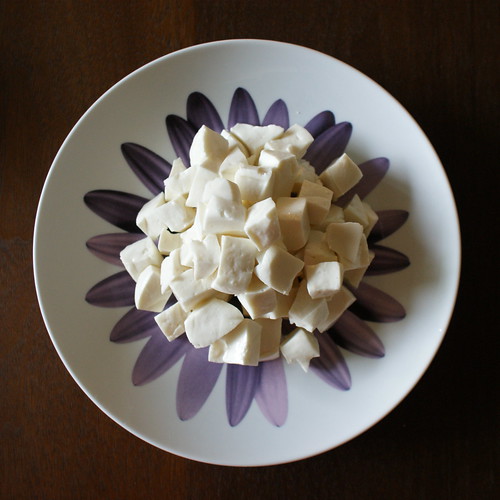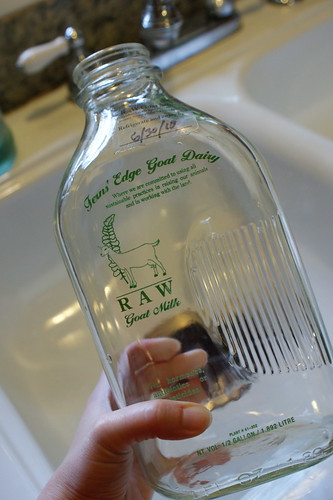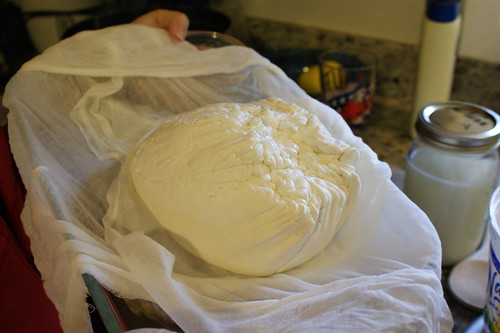Feta! Feta! Feta! Oy! Oy! Oy!
Holy hiatus, Batman! I have been incredibly busy, haven’t been making cheese and haven’t had time to write about some of the yummy cheeses I’ve been eating. However, lucky me, the ladies of FUCheese proposed a cheesemaking day and we actually made it happen. On the menu this time was something I’ve been wanting to make for over a year: feta!
I really wanted to do it with fresh goat milk but fresh milk is somewhat tricky to come by. If you have a little extra time on your hands and can drive out into the country, you can get fresh goats milk. We did discover someone inside the city limits selling goat milk from his little herd. We’ll be investigating this further for sure. When we did chevre back in ’08, we drove thirty minutes south of town to a goat farm in Molalla. The milk we got from there was incredible. But, I didn’t have time to drive out there and waited too long to even call and inquire. Then we discovered that one of the local food co-ops sold raw, unpasteurized goat milk from Fern’s Edge Dairy, a dairy outside of Eugene, Oregon. They also make their own cheese and I always snap up their chanterelle-coated chevre when I see it – so fantastic!
The milk was rather pricey – $8/half gallon (Oy!) but was really quite rich and creamy. We bought two gallons and made a double batch following the recipe in Ricki Carroll’s Home Cheese Making. There’s a note at the end of the recipe that states if the curd does not firm up, to add calcium chloride to the milk before the starter. Well. We weren’t going to waste $24 of goat milk for flabby curds! Since we had some on hand we used it. Wow! We had really firm curd. It was totally awesome. I took video, actually, of the curd cutting because I think it’s one of the hardest things to understand when you get into cheesemaking – just what the curd is supposed to look like and what it means when it says to wait for a “clean break.” I need to download my video though and play with it. I’ll do a followup post.
We drained the curds for about 45 minutes before weighing it – 48 ounces! Totally unexpected. Now, that included some whey that still needed to come out but the recipe said the yield would be 1 pound. So…? I’m not sure but I’m going to say that it was the great quality of the milk.
Next, we divided it among the four of us to take home, drain for a few more hours and then salt and age. We had quite a discussion about making a brine verses not. The recipe says that you should not brine if your goat milk does not come from a farm as it will disintegrate. I’m guessing that has to do with pasteurized goat milk? It’s not clear. I’ve decided to salt my curds, let them age for a couple days and then put them in brine. We made a whey/salt brine using the leftover goat whey (you can see a jar of it in the background above) and I plan to use that. But, I’m also going to do a little more research into the brine and make sure this will be okay. Will followup with tasting notes!
All in all, it was actually a really simple recipe. We had a lot of fun and agreed that this would be a good thing to make again. There’s two waiting periods in the recipe where it says to keep the milk at 86-degrees for an hour each time. I just put the lid on and covered it with a towel – seemed to have no problem maintaining the temperature. I think next time we do this we’ll make yogurt during those waiting times. Mmmm… yogurt. It’s been awhile since I’ve made that. So good. Must do that again soon.




